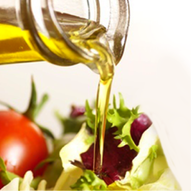5 Alarming Sources of BPA Exposure

Why You Should Care
Do you know where the primary BPA exposure sources are lurking? Even the U.S. Food and Drug Administration has expressed concern about this chemical’s possible harmful effects. Knowing these 5 most common sources of Bisphenol A exposure will give you the tools necessary to protect your family.
Bisphenol A (BPA) exposure is widespread. This harmful chemical leaches out of certain plastics, cans, and food packaging materials and has now been found in our dust, our water, our food, and in our bodies. BPA is present in over 93% of the US population at levels that are well within the range found to cause health problems according to research in animals.[1] And the latest human studies show BPA levels are directly correlated with a host of diseases, from behavior problems in children to obesity.[2-3] The good news is that if you know and avoid these top 5 common sources of BPA, you can greatly reduce your own levels as well as your family members’. Doing so may reduce your risk of obesity, behavior problems in your children and much more.
The adverse health effects of BPA
BPA is considered an “obesogen” because it can lead to obesity, and an “endocrine disruptor” because it disrupts the body’s hormonal (endocrine) balance. [2] BPA is best known for its ability to mimic the hormone estrogen in both men and women. BPA can also interfere with other hormones, like testosterone, thyroid hormones, and hormones associated with maintaining normal body weight, like leptin. In numerous studies, BPA has been associated with obesity, diabetes, and cardiovascular disease in adults and with obesity and behavioral problems in children.[4] BPA and other endocrine disruptors are also linked to health effects like cancer and reproductive system harm.
BPA exposure is particularly of concern for pregnant women and their unborn fetuses, for babies, and for children. BPA in the blood of pregnant women passes through the placenta and enters the baby’s body, and nursing mothers pass BPA on to their babies as they nurse. Because of their small body size, young children have been found to have higher BPA levels and to be particularly susceptible to its effects.
Common sources of BPA
Researchers conclude that by far, the majority of our exposure to BPA comes from food and beverages that have been stored in BPA laden containers. In other words, even though we absorb some BPA through our skin and ingest some BPA from dust, experts agree that what we eat and drink has the biggest impact on our BPA levels.
Let’s take a closer look at the 5 most common sources of BPA exposure:
Because prunes are loaded with fiber and polyphenolic compounds that reduce bone turnover, they should ideally be consumed daily.[3,4] However, in spite of the fact that they are a wonder food for preventing or treating osteoporosis, they do have a sticky texture and a strong taste so many people simply do not like eating them. Here are a few suggestions to make prunes easier to swallow:
- Canned foods. Metal (aluminum) food and drink cans are commonly coated with BPA-containing epoxy films. It is well established that BPA migrates into can contents. Numerous studies have found that BPA is a routine contaminant in canned food and beverages. In 2011, the US Food and Drug Administration conducted a study of BPA concentrations in 78 canned and two frozen food products from the US.[5] The products tested represented a variety of different food types constituting about 65% of all US canned food sales and consumption. They found BPA in 71 of the 78 canned foods but not in either of the two frozen foods. The BPA concentrations varied considerably even between different lots of the same product. In fact, all types of foods and beverages have been found to contain BPA, from Campbell’s soups to Whole Foods brand organic coconut milk. The price, quality, nutritional value, brand, and location of purchase make no difference as to how much BPA a canned product might contain. Foods sold in glass, paper, or plastic containers all contain substantially less BPA than canned foods.[6]
- Reusable water bottles (Polycarbonate plastic #7). Most water and soda is bottled in flexible, clear, plastic bottles made out of a type of plastic called polyethylene terephthalate, or PET for short. Luckily, PET does not contain or leach BPA. But polycarbonate reusable water bottles are another story. Polycarbonate plastics (sometimes marked with a #7 or “PC”), are rigid and transparent and are often used for reusable water bottles and food storage containers, among other things. BPA migrates from these containers, particularly if used for hot food or liquids. A recent study out of France tested bottled water in different types of containers and found BPA in polycarbonate reusable beverage containers in amounts ranging from small to considerable, while water bottled in PET plastic bottles did not contain BPA. Drinking BPA-contaminated beverages from these bottles increases blood levels of BPA considerably. A study from Harvard University found that college students drinking most of their cold drinks from polycarbonate bottles for one week had 69% more BPA in their bodies than they did after a week of drinking cold beverages from other containers.[7] When it comes to reusable water bottles, the use of glass instead of plastic is strongly recommended. Certain “BPA-free” alternative materials are suitable for consumption of beverages free of BPA contamination. BPA-free materials that have been independently tested include plastic bottles made with Tritan™ copolyester plastic (now used in Nalgene bottles,) uncoated stainless steel, or aluminum lined with EcoCare™ (now used in Sigg aluminum bottles).[8] Furthermore, plastics marked with a #1, 2, 4, or 5 don’t contain BPA and may be better choices.
- Soda and beer (in cans). The vast majority of canned soft drinks and beer have been found to contain BPA.[9] Out of 72 canned drinks tested in a recent study, including diet soda, non-diet soda, fruit-flavored and energy drinks, 69 were found to contain BPA.[10] Soda consumption is significantly associated with BPA levels in the body despite the fact that canned sodas typically contain far less BPA than canned foods.[11]
- Fast food. BPA is detected in fast food at levels that can exceed the levels in some canned goods.[12] Researchers from the University of California, Berkley recently studied hundreds of pregnant Mexican-American women in California in order to learn more about different BPA exposures in this population. The researchers found that in addition to soda, hamburgers were the top contributor to the women’s BPA levels. The number of servings of soda or hamburgers per week directly correlated with the women’s BPA levels. Women who consumed 3 or more servings of soda per day or hamburgers three times a week had 58% and 20% (respectively) higher urinary BPA concentrations compared with women who consumed no sodas or hamburgers.[13]
- Cash register receipts. Most carbonless paper receipts used in gas stations, convenience and grocery stores contain BPA. The BPA then gets absorbed through the skin, ingested, or inhaled. Although some studies have found that BPA exposure via receipts contributes very little to human levels compared to exposure via food and drink, other studies have found that receipts may play a much larger role in contributing to BPA exposures, particularly for individuals who regularly handle receipts as part of their occupation. A study among American pregnant women in various occupations found that cashiers had the highest BPA levels; average BPA levels of cashiers were about 25% higher than BPA levels of women who consumed one or more canned vegetable servings per day.[14]
Protect your family by avoiding these 5 common sources of BPA exposure
So the key to reducing your risk associated with BPA exposure is to be aware of these 5 common sources and use BPA-free alternatives. That means avoiding packaged products and canned foods, switching to a BPA free water bottle, storing your food in glass containers, giving up soda, and using glass, porcelain or stainless steel containers for hot foods and liquids. It will be worth it for your family’s sake.
[1] Reprod Toxicol. 2007 Aug–Sep;24(2):131–138.
[2] PLoS One. 2013 Jun 12;8(6):e65399.
[3] Environ Res. 2013 Jul 16. pii: S0013-9351(13)00112-6.
[4] Pediatrics. 2013 Aug 19.
[5] J Agric Food Chem. 2011 Jul 13;59(13):7178-85.
[6] J Agric Food Chem. 2013 May 15;61(19):4655-62.
[7] Environ Health Perspect. 2009 Sept;117(9):1368–1372.
[8] Chemosphere. 2011 Oct;85(6):943-7.
[10] J Agric Food Chem. 2009 Feb 25;57(4):1307-11.
[12] Food Addit Contam Part A Chem Anal Control Expo Risk Assess. 2011 Jun;28(6):791-8.
[13] Environ Int. 2013 Sep;59:152-60.
[14] Environ Health Perspect. 2011 Jan;119(1):131–137.
Article originally written by Kathleen Jade, ND 9/16/2013


















